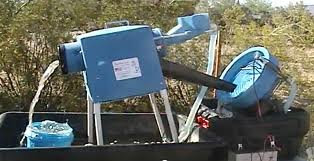Gold refining with aqua regia by machine, after the raw material is impure gold is melted in an induction furnace the form of grains or flakes to be fed to the Aqua region reactor. The Aqua region refining plant comprises of steps mix acid that is aqua reaction as the first step we're an impure alloy is dissolved.
Steam or heating issues as a step to enhance reaction and ensure good efficiency. this aqua region reactor is connected to a fume scrubber which takes care of neutralizing toxic fumes of acid mainly knocks generated due to nitric acid and also hydrochloric acid vapors.
Silver gets converted to white silver chloride crystals which are filtered in the silver chloride filter and once it is ensured that entire silver chloride is filtered.
Then the silver chloride crystals from the filter are collected and accumulated, these are then cemented in silver semen tation unit where it is reduced by a mixture of sodium hydroxide and glucose. The cemented silver is filtered casted into a node bar and is refined to pure silver of 999 quality an electrolytic silver refining setup.
Then the silver chloride crystals from the filter are collected and accumulated, these are then cemented in silver semen tation unit where it is reduced by a mixture of sodium hydroxide and glucose. The cemented silver is filtered casted into a node bar and is refined to pure silver of 999 quality an electrolytic silver refining setup.
The liquids after filtration of silver from electrolytic refining plant are also collected in liquid storage tanks. Clear gold chloride solution is transferred to another reactor where sodium metabisulfite is charged in as a reducing agent, then this will precipitate gold from the solution, this is monitored by good pH control and viewing glass reactor for the right change in color.
The cemented gold is then filtered in the gold filter until it is ensured that entire gold is collected this wet gold is 99.5 quality and the liquids left out are transferred to exhaust liquid storage tanks.
The cemented gold is then filtered in the gold filter until it is ensured that entire gold is collected this wet gold is 99.5 quality and the liquids left out are transferred to exhaust liquid storage tanks.
Pure gold of 99.5 quality filtered from aqua region refining plant if it needs to be further purified should pass through the process of electrolytic gold refining in order to get 999.9 purity.
All the exhaust liquids are collected in storage tanks are passed through three tanks by overflow systems and then primarily in the first stage copper is cemented which is filtered and collected for further refining. The liquids after copper sementation are treated with alkali solution mixture of calcium and sodium hydroxide. These metallic hydroxy Tsar sedimented which are filtered in a filter press and then after clear water is discharged to drain.
The pure gold sand of 99.5 generated from the Aqua region process is first dried in an oven or it can be pure gold of 99.9 from electrolytic process. This gold is then melted in an induction furnace where after it follows the process depending on the configuration of gold bar desired, for gold bars up to 100 GMS configuration the molten gold is collected in a pre-designed mold for the desired configuration and strips, these gold strips are then passed through the rolling mill where the rollers are set to get the right thickness of the strip's getting converted two sheets.
These sheets are then passed through the cutting press with set of punching so that gold blocks are cut as desired these gold blocks are then annealed to remove oxide by a flame and then cooled and cleaned.
For gold bars above 100 GMS up to killobar configuration. The molten gold is collected in a pre-designed mold for the desired configuration. This is then cooled in the cooling table where bar is formed. A burner flame is used in order that oxides are not formed this is mainly a kneeling step and then the gold bar is cleaned.
These sheets are then passed through the cutting press with set of punching so that gold blocks are cut as desired these gold blocks are then annealed to remove oxide by a flame and then cooled and cleaned.
For gold bars above 100 GMS up to killobar configuration. The molten gold is collected in a pre-designed mold for the desired configuration. This is then cooled in the cooling table where bar is formed. A burner flame is used in order that oxides are not formed this is mainly a kneeling step and then the gold bar is cleaned.
Videos Gold Refining With Aqua Regia By Machine
See Also












































